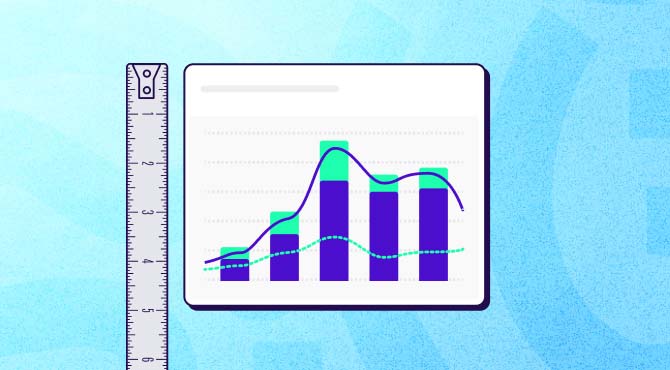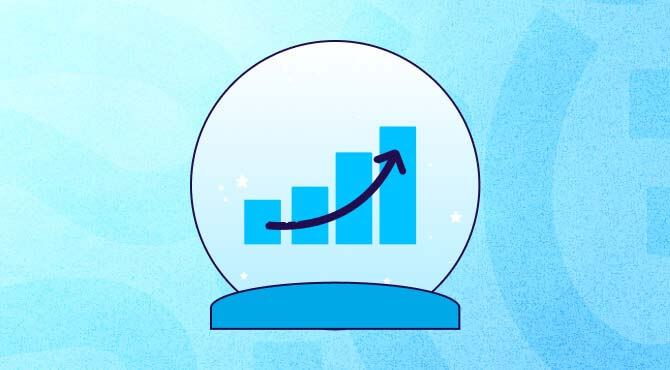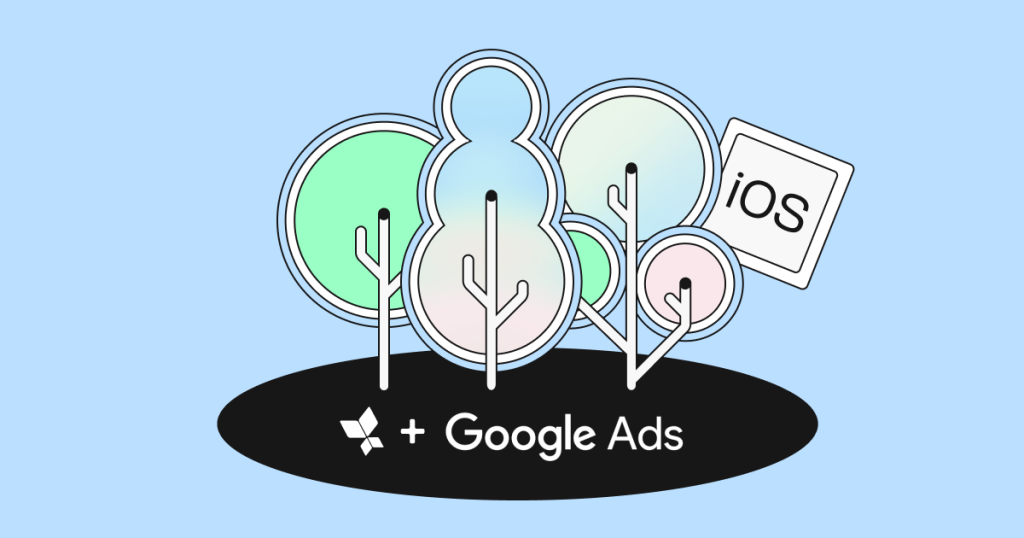Performance creative: Combining data and creativity


When it comes to online campaigns, marketers love to focus on data: impressions, clicks, campaign ROI, and more. There are seemingly endless ways to measure how your campaigns perform — but what about the creative side of things?
After all, when a user encounters an ad, the creative (text and design) is what they see. A memorable, and potentially successful, ad usually has exceptional creative (think Super Bowl ads!). But exceptional doesn’t always mean extravagant.
So, how do you know if you’re getting your creative right? Standard performance metrics give you an idea, by indicating how well people respond to your ad. But for a deeper understanding of what, precisely, makes your ad successful or not, you need to explore performance creative.
In this blog, we’ll take a look at what performance creative is, its importance, how it’s measured, KPIs, and everything else you need to know.
What is performance creative?

Performance creative is where data and creativity meet.
It’s about using the true data behind creative concepts to track their performance and to help plan and optimize creative assets moving forward.
Performance creative covers ad copy, images, and video assets, but a major focus is call to action (CTA) buttons. This is because an ad can be creatively brilliant, but if it doesn’t lead people to click the CTA, it won’t be considered a success.
The development of performance creative means that creative assets are no longer judged on gut feel. Instead, companies can now apply the same rigorous, data-driven approach to creative that they’ve always used for performance KPIs.
Why is performance creative important to measure?
Creative is a key element in any marketing campaign, so understanding its performance helps you drive better results — including improved ROI/ROAS and deeper audience understanding.
Knowing your audience is critical, but it’s not enough by itself. You need data to make sure you’re truly answering their needs. Performance creative can help you identify which creative assets work best for your audience, leading to even better campaigns with better results.
And with hard data to back up your approach, you can justify your creative decisions, budget with confidence, and avoid wasting money on poorly-performing assets.
Let’s take a look at how to dive into the creative data.
8 steps to measure performance creative

Once you’ve decided to start measuring performance creative, follow these steps to set yourself up for success. There’s no one perfect formula for a successful creative, and that’s why it’s so important to test things out and be open to experimenting. But even as you try new things, these guidelines can help you optimize faster to find more creative winners.
- Set benchmarks. Take a look at your historical data to establish baseline performance metrics for your creative assets. This serves as a reference point for future campaigns.
- Define your target audience. Deep-dive into your intended audiences to make sure your creative is resonating with the right people, so you can measure effectiveness accurately.
- Understand privacy limitations. Familiarize yourself with privacy regulations and SKAdNetwork constraints. This can help you adapt your strategies accordingly and, of course, make sure you’re remaining compliant.
- Define your KPIs. We’ll dive into your KPIs in the next section, but as a first step, select specific, measurable key performance indicators that align with your campaign goals. Popular examples include click-through rates, conversion rates, or return on ad spend.
- Implement analytics tools. Make sure you’re rounding up your various analytics tools so you can track and analyze your creatives.
- Set A/B tests. There’s nothing like a good old A/B test to understand what’s working and what isn’t. These controlled experiments compare different versions of your creative to understand what leads to better performance.
- Measure and optimize. There’s no such thing as a perfect campaign. You’ll have to keep measuring and optimizing your work to keep improving results over time.
- Track brand metrics. In addition to performance metrics, measure brand awareness, recall, and sentiment to gauge how well your brand is doing.
Which KPIs to measure

There are several metrics you can use to measure performance creative. It’s important to select the relevant KPIs for your campaign goals — we’ve listed some common ones below.
- Click-through rate (CTR): This common metric looks at the percentage of viewers who click on your ad after seeing it. This can be an important indication of how compelling your creative is at first glance.
- Conversion rate: This KPI tracks the percentage of users who take a desired action after interacting with your creative. This may be making a purchase or signing up for a newsletter or service. Your conversion rate shows the bottom line result of your campaign and how it’s affecting your business results.
- Return on ad spend (ROAS): ROAS calculates the revenue generated for every dollar spent on advertising. This helps you understand the overall efficiency and profitability of your creative campaigns. It’s a popular KPI with eCommerce stores.
- Creative Quality Score (CQS): This is a composite metric that looks at various aspects of your creative including relevance, engagement, and conversion potential.
- Engagement rate: This KPI measures how users interact with your creative beyond clicks, including likes, comments, shares, how long they view a video, and so on. This can give you information about how captivating or shareable your content is.
- Bounce rate: This metric typically applies to landing pages or websites, showing how many visitors leave without taking any action. High bounce rates may show that the creative used isn’t working with the linked content.
- Time on page: This KPI shows how long users are spending on your landing page or website after interacting with your creative. Longer times typically correlate with engaging and relevant content.
- View-through rate (VTR): For video creative assets, VTR measures the percentage of viewers who watch your video until the end, indicating they find your content interesting and engaging.
Best practices for improving your performance creative

So, we’ve established that performance creative is where data meets creativity, and that measuring and testing are important. Now, let’s get down to the nitty gritty and talk about some things you can do to make sure you’re optimizing efficiently and moving towards the results you want to see. Experiment with the following ideas to discover what works best for your app.
- Create a centralized library of assets. Setting up a digital repository for all of your creative assets makes it easier for teams to access, reuse, and study successful creatives, and can also streamline your production process.
- Communicate between teams. Open dialogue and collaboration between teams facilitate successful creatives. Bring together creative, marketing, and analytics teams to successfully turn performance data into smart creative decisions.
- Ensure clear messaging. Each piece of creative should have a single, well-defined message. That way, your audience can focus on what matters and avoid overwhelm.
- Get creative with your testing using AI-powered tools. Tools that use artificial intelligence and machine learning can help you generate and test multiple creative options quickly, as well as identifying winning combinations of visuals, copy, and CTAs.
- Monitor the competition. Make it a habit to regularly track and understand what your competitors are doing when it comes to creative. This can help you identify trends and potential opportunities and give you new ideas.
- Personalize your creative. Use your data-driven insights to tweak your creative content to specific audiences.
- Use storytelling. In a crowded market, telling a great story that evokes emotions builds a stronger connection with your audience.
Future trends for measuring performance creative

Rapid advances in technology will shape how we use and measure performance creatives moving forward. Artificial intelligence and machine learning will bring new opportunities to analyze creative elements in a more sophisticated way, delivering deeper insights about how creatives drive performance. And real-time optimization suggestions will enable us to change creatives quickly and effectively to meet KPIs.
There are already some great tools out there to help with this task, including AppsFlyer’s own creative optimization solution, which can help with some of the heavy lifting involved in measuring performance.
Tools like these will be even more crucial as privacy restrictions become increasingly complex. Regulations such as GDPR and CCPA are constantly evolving and third-party cookies are phasing out, meaning we’ll have to develop new methods for measuring performance while protecting user privacy.
Looking ahead, performance creative will have to balance new technologies that will improve the way marketers work, with increasing privacy regulations that make it more challenging to gather customer data.
Key takeaways
- Performance creative combines data analysis with creative assets, using the data behind creatives to optimize marketing campaigns. The insights it provides can lead to higher ROI, deeper audience understanding, and better creative decisions.
- Key steps in measuring performance creative include setting benchmarks, defining the target audience, understanding privacy limitations, and implementing analytics tools.
- Important KPIs for measuring performance creative include click-through rate (CTR), conversion rate, return on ad spend (ROAS), and engagement rate.
- To improve performance creative, consider creating a centralized asset library, fostering team communication, and ensuring clear, personalized messaging. Continuous measurement and optimization — for example, using AI-powered testing tools — are key to ongoing success.
- Future trends in performance creative measurement will be shaped by advancements in AI and machine learning, offering more sophisticated analysis and real-time optimization while protecting user privacy.










